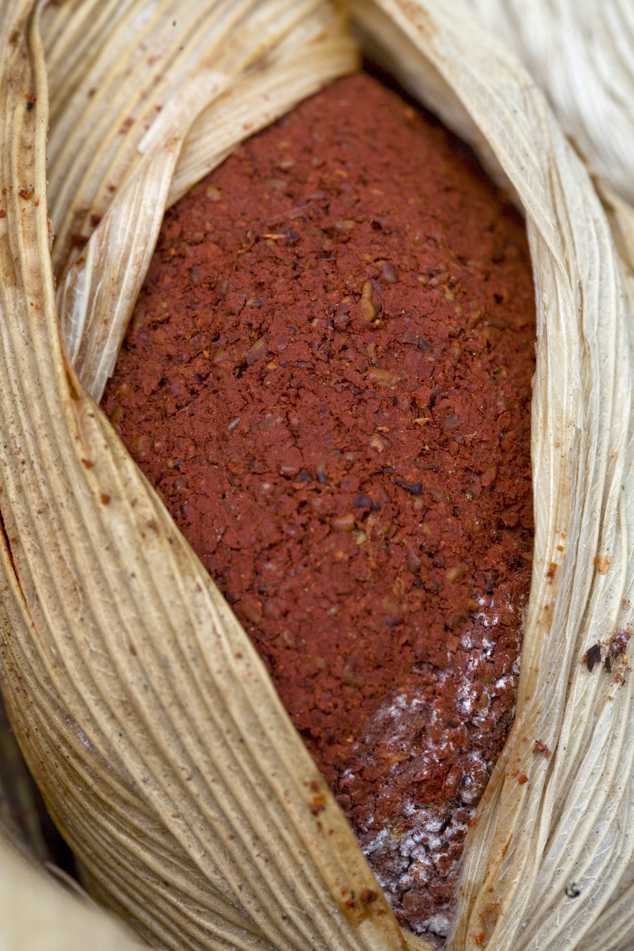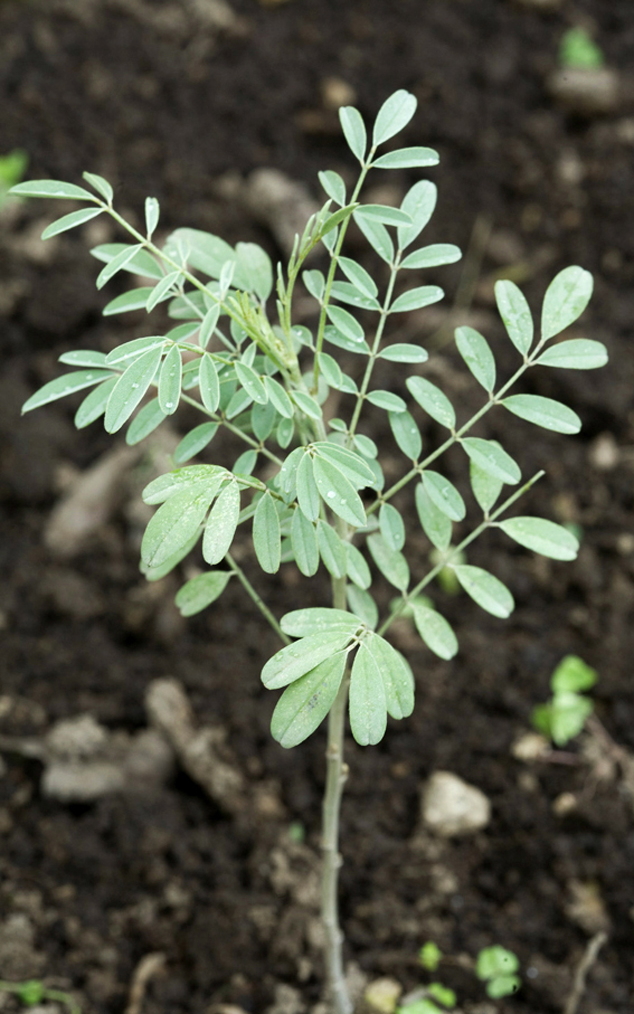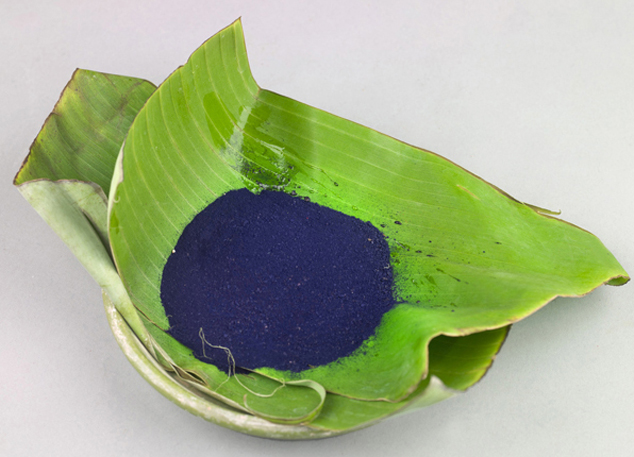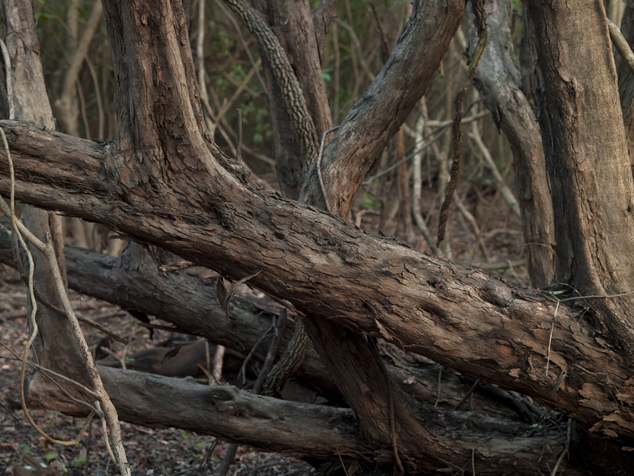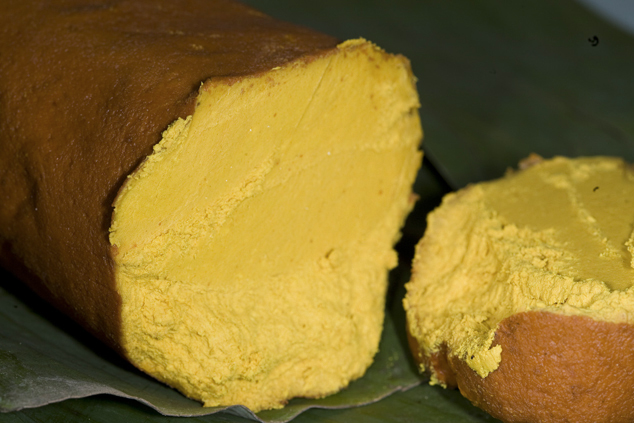Plants of Guatemala to produce colorants for Mayan clothing
The Classic Maya dyed cotton and bark paper to make clothing. The Maya colored their ceramics. And for over a thousand years the Maya painted their pyramids and temples (and their murals). So clearly the Maya had plenty of experience in coloring their environment. They even colored their cacao red (with achiote).
An entire book has been written on Maya colorants, and several decades ago Merle Greene Roberson tracked down the clays that she estimated were the source of some of the colors used by the Classic Maya to paint Palenque's buildings.
Scholars and chemists worked for decades to try to figure out how the Maya made “Maya blue.” The recipe for Maya blue is another demonstration of the technical abilities of the Mayan people for thousands of years. Since FLAAR also studies wide-format inkjet inks (used for digital printers, see our www.FineArtGicleePrinters.org and our www.wide-format-printers.org), we are familiar with how quickly modern chemical inks fade in the sun. Yet the Mayan pyramids and temples had paint which lasted for centuries!
Red colorant achiote, Bixa orellana from Indigo Arte y Textiles at Antigua Guatemala, Guatemala.
To me, as a specialist in wide-format inkjet printing (including inks), it is amazing that with all our modern technology, most inkjet prints will fade outside in about two or three years. Most inks will fade inside after several years (though really good ink will last ten years inside if not in direct sun from a nearby window). But still, most modern inks are not long-lasting enough to be used for architectural decoration outside. Admittedly the problem is not that colors can't be made to withstand fading, but the fact that the most stable colors are made of minerals that clog printheads, or made of minerals that are poisonous to our environment. So paint will last outside, but ink that has to be jetted through a piezo or thermal printhead will not last very long under sunlight.
Yet the Classic Maya were able to make some colors that are still bright today after many centuries exposure to sun coming through the door ways.
I tend to study the colorants that come from plant substances, since our long-range project is on ethnobotany. Many colorants from the earth: this would be ethno-geology or ethno-minerology or something similar.
Some color comes from the cochinilla insect: that would be ethnozoology. Below I list primarily colors from plants, specifically native plants of Mesoamerica.
Aloe, sabila,
Black zapote, Diospyros digyna
Old Fustic, Chlorophora tinctoria, dye; wood utilitarian
Indigo Indigofera guatimalensis
Indigo Indigofera guatimalensis plant that gives indigo color similar to dark blue.
Indigo color produce from the plant Indigofera guatimalensis.
Lac is really an insect, not a plant, so we cover this insect on our new Maya ethnozoology page by October. We have found, and photographed, the niij insect, in abundance, in Baja Verapaz. This is not really a colorant, but a laquer.
Maya blue
Palo de tinta, Haematoxylon campechianum, logwood. This plant produce a black dye (hematin crystals and haemotoxylin).
Palo de tinto Haematoxylon campechianum that produce a black dye alongside a seasonal pond
1 km from Arroyo Petexbatún, near Sayaxché, Petén, Guatemala June 2011.
I will add another dozen plants when time is available (since my days are also filled with work on ethnozoology, iconography, and advanced digital imaging technology). Lundell adds another seven:
- Syckingia salvadorensis (standl.) Standl. Chacahuante, chactemuch, palo colorado.
- Justicia spicigera (Schlecht.) L. H. Bailey. Añil
- Indigofera suffruticosa Mill. Chob, añil
- Morinda yucatanensis Greenm. Xhoyoc, bejuco piñoncillo
- Caesalpinia platyloba Wats. Chacte
- Ditaxis tinctoria (Millsp.) Pax & Hoffm. Tinta roja
I would estimate that additional colorants will be listed in the recent monograph by Houston et al on ancient Maya color. However this excellent book on Maya colorants is primarily colorants for painting ceramics and murals on temples and palaces.
Yellow colorant produce from curry roots, Photo by Eduardo Sacayón at Indigo Arte y Textiles, Antigua Guatemala, Guatemala.
Be sure to obtain reports by Hideo Kojima on Maya colors from plants
If you are interested in any aspect of Maya colors, be sure to track down articles and reports by Hideo Kojima. He has been on the Junta Directiva of Asociacion Tikal for many years.
A more recent book on Maya colorants is now available from Olga Reiche
Most recently updated July 6, 2015 to add mention of the nice book by Olga Reiche.
Previously updated December 21, 2012
First posted August 26, 2011.

